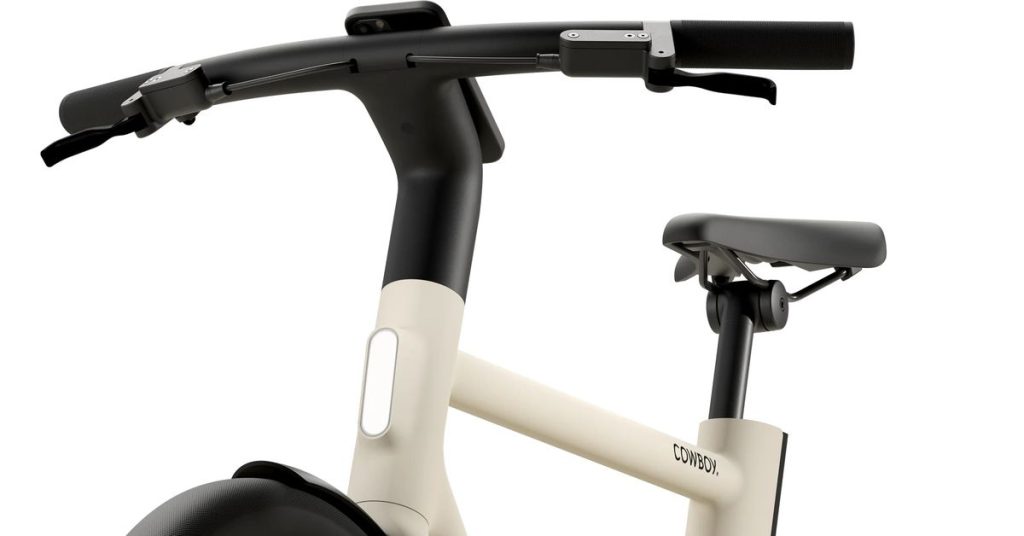
Cowboy and VanMoof are two very similar e-bike companies, which is why we’re all wondering if Cowboy will be next to file for bankruptcy now that the era of free VC money is over and profitability is key to survival. This week Cowboy introduced a cheaper no-frills e-bike configuration ahead of yet another price increase. Moves that have only intensified scrutiny of the boutique Belgian startup.
Nevertheless, Cowboy CEO Adrien Roose tells me that the electric bike maker is on more secure footing, despite all the similarities.
For example, both European e-bike makers took on millions from investors in recent years while posting heavy losses during periods of rapid scale up. Both focus on direct-to-consumer sales of premium, software- and sensor-laden e-bikes assembled from lots of custom parts, and both Cowboy and VanMoof had to secure additional funding earlier in the year to deal with unforeseen operational challenges in a post-pandemic e-bike marketplace that has cooled off considerably.
This week, Cowboy launched a less expensive (but still not cheap) $2990/€2490 “Core” configuration of its Classic, Cruiser, and Cruiser ST models that offers fewer features, like replacing the maintenance-free Gates Carbon belt drive with an oily chain drive, as it raises prices elsewhere. That’s eerily similar to VanMoof’s product trajectory with the launch of the cheaper scaled-back S4 after raising prices on its overwrought S5 flagship, all just two months before the company went public about its dire financial situation.
Cowboy’s Core e-bike configurations only come in black, lack a wireless charger under the integrated phone mount, and ship with a slower charging brick. Cowboy told Dutch-language Bright magazine that the upcoming price increase from $3490/€2990 to $3790/€3290 on August 1st for its belt-driven (now called “Performance” configurations) e-bikes was required to “stay healthy” (more on that later). Those same e-bikes were priced at €2490 when launched in Europe two years ago and as low as $1990 when first introduced to the US — back when startups could sell their electric bikes at a loss due to the seemingly endless supply of investor capital.
Cowboy aims to further justify the difference between the Core and Performance configurations through software. Moving forward, Cowboy e-bikes configured for Performance will benefit from the otherwise optional $300/€300 Cowboy Connect software features like adaptive power, crash detection, and three new Google Maps features to share live journey info, alert the rider to upcoming hazards, and the ability to choose a route based on the best air quality. Cowboy Connect also unlocks the e-bike maker’s first Apple Watch app. All nice to have, I guess, but certainly not critical to the operation of an e-bike.
So yeah, like VanMoof, Cowboy e-bikes are high-tech proprietary computers-on-wheels with a feature set that can, at times, verge on gimmickry. Nevertheless, Cowboy wants you to know that it’s different.
“Cowboy is in a very different position to VanMoof,” insists Cowboy CEO Adrien Roose in an email exchange with The Verge. “Our key stakeholders including our investors, supply chain and distribution partners and employees are fully supportive of the business plan we are executing.”
The big difference between Cowboy and VanMoof is the prospect of profitability: Cowboy has repeatedly said that it’s close, after having posted EBITDA losses of around €21 million over the last few years; but VanMoof never was, having reportedly lost nearly €80 million in each of the last two years.
Last week, Cowboy issued a press release titled “Cowboy on track to profitability with break even as of Q3 2023.” However, Roose now tells me that the company is “on track to achieve our goal of profitability within the current quarter, and on a full year basis next year.” Of course, profitability could be €1, but even that would be a first for the six-year old company after a history of losses. A profitable 2024 would certainly be notable.
Roose cites “meaningful revenue growth” for each month this year so far for his optimism about the quarter ending on September 30th, as well as “strong sales” through July following the launch of its more upright and comfortable Cruiser e-bike on July 3rd. “We expect sales to exceed our target which will make it the best month of the year so far.”
Roose lists a few other notable differences between Cowboy and VanMoof:
- Cowboy assembles close to its customers in Europe. (VanMoof’s e-bikes were assembled and distributed to customers from its factory in Taiwan.)
- Cowboy has evolved from a D2C-only business and now distributes its bikes through an expanding range of independent bike dealers and retailers. Through these bike dealers the company is also transforming its after-sales model. (VanMoof’s direct-to-consumer support was almost entirely performed at about 50 branded stores in select cities, whereas Cowboy is currently working with over 100 independent bike stores to sell, repair, and service its bikes with another 200 scheduled to come on board in Europe this year.)
To “stay healthy,” Roose candidly explains that the August 1st price increase is needed to ensure that reasonable profit margins exist for both Cowboy and its new network of independent bike shop partners. Roose also cites several other metrics to demonstrate the company’s relative operational health:
- Cowboy inventory is down 50 percent from a year ago and its working capital position is stable.
- Cowboy is achieving 40 percent gross margin on new bikes sold.
- Production costs are down 20 percent.
So, while you might not like Cowboy’s price increase, that coupled with operational efficiencies across the board could be the difference between your expensive e-bike running for years, and, well… VanPoof! [Editor’s Note: credit to ex-Verge Dieter Bohn for sliding that and “VanOOF” into my DMs on the day VanMoof declared bankruptcy.]
Despite the opportunity VanMoof’s exit presents, which was recognized by Cowboy’s cheeky release of the Bikey app (that has earned the company oodles of goodwill in VanMoof communities), Roose seemed genuinely distraught over VanMoof’s demise when I met with him on a video call, a feeling that was also expressed by fellow Cowboy co-founder and CTO Tanguy Goretti.
“While a lot of individuals will be quick to jump guns and criticize VanMoof, I think they still deserve some recognition for their achievements,” wrote Goretti on Linkedin. “They have helped change the face of the industry and the perception of e-bikes since they started 14 years ago (!). They made it cool when it was a product mainly used by our grandparents. They truly had a positive impact on cities and not a small one.”
RIP, VanMoof — you’ll always be my first.

 Latest Breaking News Online News Portal
Latest Breaking News Online News Portal




